Introduction to PHP form elements: input field tag
Form
In this chapter we focus on introducing the input field tag .
Input field tag
Input field tag is one of the most commonly used tags in forms. Commonly used input field tags include text boxes, buttons, radio buttons, checkboxes, etc.
The syntax format is as follows:
<form> <input name="file_name" type="type_name"> </form>
The parameter name refers to the name of the input domain; the parameter type refers to the type of the input domain. The following types of input fields are provided in the
type attribute values, examples and explanations:
1. text
Example:
<input name="user" type="text" value="饮料" size="12" maxlength="1000" >
Instructions: name is the name of the text box, value is the default value of the text box, size refers to the width of the text box (in characters), maxlength refers to the text box The maximum number of input characters.
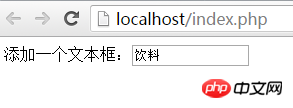
2. password
Example:
<input name="pwd" type="password" value="123456" size="8" maxlength="16" >
Description: Password field, the user is in this text box The input characters will be replaced and displayed as "*" to maintain confidentiality.
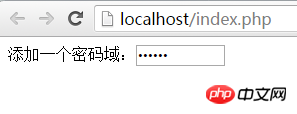
3. file
Instance:
<input name="file" type="file" enctype="multipart/form-date" size="12" maxlength="200" >
Description: File field, when file is uploaded , can be used to open a modal window to select files. Then upload the file to the server through the form, such as uploading a word file, etc. It must be noted that when uploading files, you need to specify the attributes of the form enctype="multipart/form-date" to achieve the upload function.
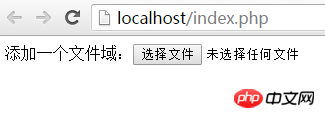
4. radio
Example:
<input name="sex" type="radio" value="男" checked>男 <input name="sex" type="radio" value="女" >女
Description: Radio button, used to set a group The user can only select one item. The checked attribute is used to set the radio button to be selected by default.
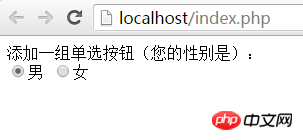
5. checkbox
Example:
<input name="goods" type="checkbox" value="book" checked="checked" >图书 <input name="goods" type="checkbox" value="fruits" >水果 <input name="goods" type="checkbox" value="food" >食品
Description: Check box, allowing the user to select multiple options. The checked attribute is used to set the single checkbox to be selected by default. For example, when collecting personal information, you are required to make multiple choices among the options of personal preferences.
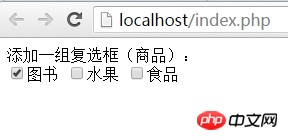
6. submit
Instance:
<input name="submit" type="submit" value="提交" >
Description: Submit the content in the form to the server.
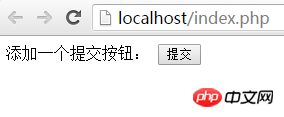
7. reset
Example:
<input name="reset" type="reset" value="重置">
Description: Clear and reset form content, used to Clears the contents of all text boxes in the form and returns the selection menu items to their initial values.
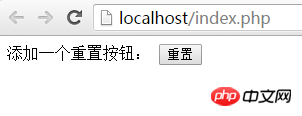
8. button
Example:
<input type="button" value="Hello world!">
Description: The button can trigger the action of submitting the form. When the user needs to modify the form, the form can be restored to its original state, and it can also play other roles according to the needs of the program. Ordinary buttons are generally used with JavaScript scripts for form processing.
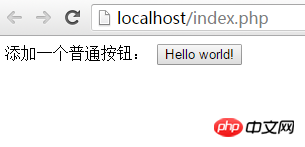
9.hidden
The example is as follows:
<input type="hidden" name="id">
Description: Hidden domain, used in Submit the variable value implicitly in the form. Hidden fields are invisible to users on the page. The purpose of adding hidden fields is to collect or send information in a hidden way. When the viewer clicks the "Send" button to send the form, the information in the hidden field is also sent to the processing page specified by the action.
The above is an introduction to the input field mark and an example of the type attribute of . Friends need to memorize this and practice more operations, because the form will be very useful in future development. .
The above is the detailed content of Introduction to PHP form elements: input field tag . For more information, please follow other related articles on the PHP Chinese website!

Hot AI Tools

Undresser.AI Undress
AI-powered app for creating realistic nude photos

AI Clothes Remover
Online AI tool for removing clothes from photos.

Undress AI Tool
Undress images for free

Clothoff.io
AI clothes remover

Video Face Swap
Swap faces in any video effortlessly with our completely free AI face swap tool!

Hot Article

Hot Tools

Notepad++7.3.1
Easy-to-use and free code editor

SublimeText3 Chinese version
Chinese version, very easy to use

Zend Studio 13.0.1
Powerful PHP integrated development environment

Dreamweaver CS6
Visual web development tools

SublimeText3 Mac version
God-level code editing software (SublimeText3)

Hot Topics
 1664
1664
 14
14
 1423
1423
 52
52
 1321
1321
 25
25
 1269
1269
 29
29
 1249
1249
 24
24
 PHP and Python: Comparing Two Popular Programming Languages
Apr 14, 2025 am 12:13 AM
PHP and Python: Comparing Two Popular Programming Languages
Apr 14, 2025 am 12:13 AM
PHP and Python each have their own advantages, and choose according to project requirements. 1.PHP is suitable for web development, especially for rapid development and maintenance of websites. 2. Python is suitable for data science, machine learning and artificial intelligence, with concise syntax and suitable for beginners.
 PHP in Action: Real-World Examples and Applications
Apr 14, 2025 am 12:19 AM
PHP in Action: Real-World Examples and Applications
Apr 14, 2025 am 12:19 AM
PHP is widely used in e-commerce, content management systems and API development. 1) E-commerce: used for shopping cart function and payment processing. 2) Content management system: used for dynamic content generation and user management. 3) API development: used for RESTful API development and API security. Through performance optimization and best practices, the efficiency and maintainability of PHP applications are improved.
 PHP: A Key Language for Web Development
Apr 13, 2025 am 12:08 AM
PHP: A Key Language for Web Development
Apr 13, 2025 am 12:08 AM
PHP is a scripting language widely used on the server side, especially suitable for web development. 1.PHP can embed HTML, process HTTP requests and responses, and supports a variety of databases. 2.PHP is used to generate dynamic web content, process form data, access databases, etc., with strong community support and open source resources. 3. PHP is an interpreted language, and the execution process includes lexical analysis, grammatical analysis, compilation and execution. 4.PHP can be combined with MySQL for advanced applications such as user registration systems. 5. When debugging PHP, you can use functions such as error_reporting() and var_dump(). 6. Optimize PHP code to use caching mechanisms, optimize database queries and use built-in functions. 7
 The Enduring Relevance of PHP: Is It Still Alive?
Apr 14, 2025 am 12:12 AM
The Enduring Relevance of PHP: Is It Still Alive?
Apr 14, 2025 am 12:12 AM
PHP is still dynamic and still occupies an important position in the field of modern programming. 1) PHP's simplicity and powerful community support make it widely used in web development; 2) Its flexibility and stability make it outstanding in handling web forms, database operations and file processing; 3) PHP is constantly evolving and optimizing, suitable for beginners and experienced developers.
 PHP vs. Python: Understanding the Differences
Apr 11, 2025 am 12:15 AM
PHP vs. Python: Understanding the Differences
Apr 11, 2025 am 12:15 AM
PHP and Python each have their own advantages, and the choice should be based on project requirements. 1.PHP is suitable for web development, with simple syntax and high execution efficiency. 2. Python is suitable for data science and machine learning, with concise syntax and rich libraries.
 PHP and Python: Code Examples and Comparison
Apr 15, 2025 am 12:07 AM
PHP and Python: Code Examples and Comparison
Apr 15, 2025 am 12:07 AM
PHP and Python have their own advantages and disadvantages, and the choice depends on project needs and personal preferences. 1.PHP is suitable for rapid development and maintenance of large-scale web applications. 2. Python dominates the field of data science and machine learning.
 PHP vs. Other Languages: A Comparison
Apr 13, 2025 am 12:19 AM
PHP vs. Other Languages: A Comparison
Apr 13, 2025 am 12:19 AM
PHP is suitable for web development, especially in rapid development and processing dynamic content, but is not good at data science and enterprise-level applications. Compared with Python, PHP has more advantages in web development, but is not as good as Python in the field of data science; compared with Java, PHP performs worse in enterprise-level applications, but is more flexible in web development; compared with JavaScript, PHP is more concise in back-end development, but is not as good as JavaScript in front-end development.
 PHP and Python: Different Paradigms Explained
Apr 18, 2025 am 12:26 AM
PHP and Python: Different Paradigms Explained
Apr 18, 2025 am 12:26 AM
PHP is mainly procedural programming, but also supports object-oriented programming (OOP); Python supports a variety of paradigms, including OOP, functional and procedural programming. PHP is suitable for web development, and Python is suitable for a variety of applications such as data analysis and machine learning.




